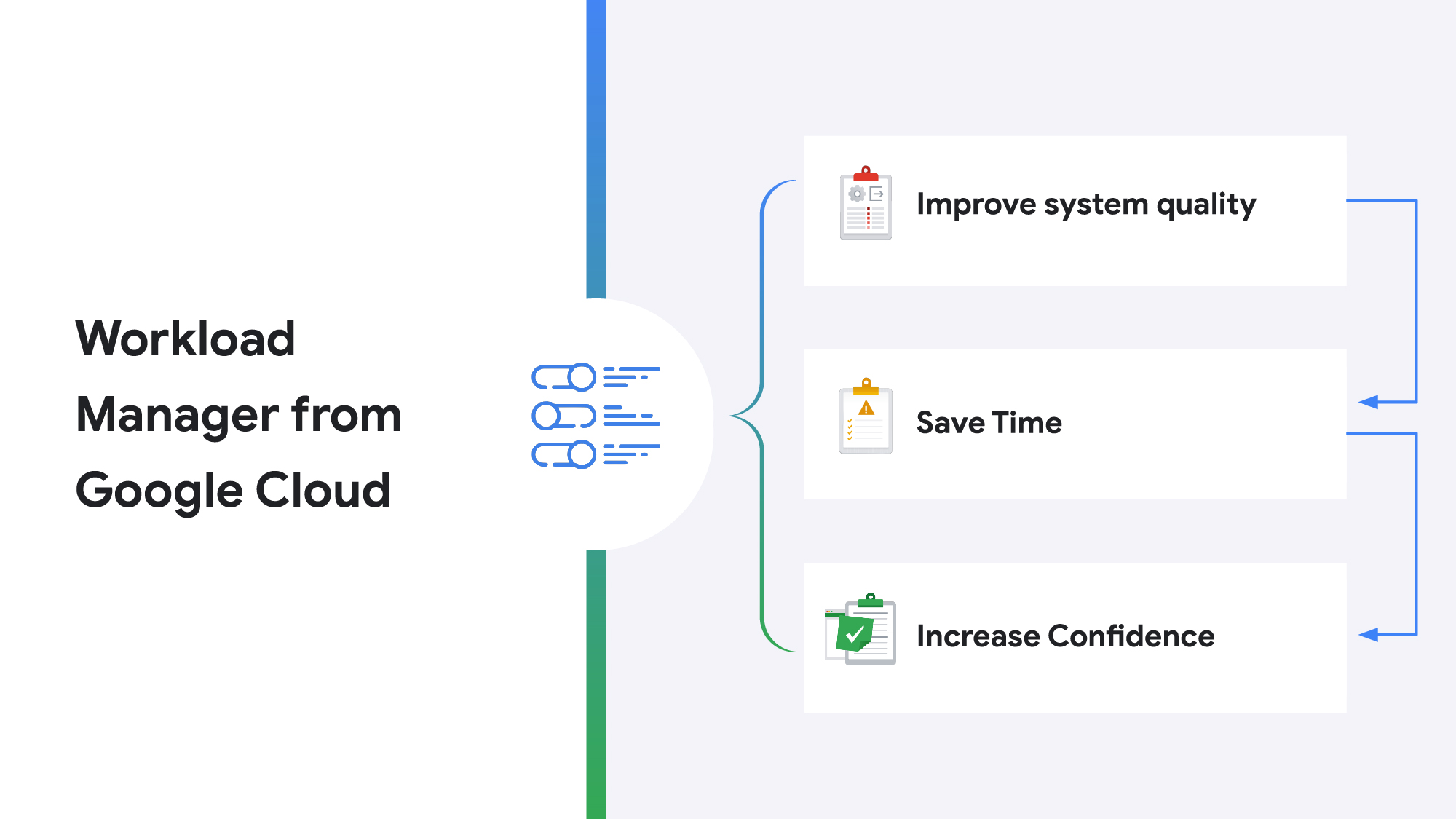Introducing Workload Manager: Maximize reliability and performance by automating best practices
Snehanshu Shah
Managing Director, SAP
David Cheng
Senior Product Manager
Today, we are excited to announce the General Availability of Workload Manager, now available for SAP solutions. Workload Manager is a new Compute Engine service that provides continuous analysis of your workload configurations to identify issues, detect misconfigurations, and improve system reliability.


Safeguarding business critical systems
Customers often tell us that configuring and maintaining large-scale, business-critical workloads can be challenging. Best practices for workload deployments and configurations evolve over time. Staying up to date with best practices usually involves manual effort, introducing risks for errors that undermine system availability and reliability. To address these challenges, Workload Manager bakes awareness of your workloads directly into the Google Cloud platform experience, intelligently detecting what workloads you’re running and analyzes them against the latest best practices.
Product benefits:
Improve system quality: Workload Manager provides initial and ongoing validation of infrastructure configuration, HA setup, and OS configurations to help you improve workload reliability and prevent issues before they impact your business-critical applications.
Lower operational overhead: Workload Manager provides automated validation to not only give you confidence in your deployments, but automate traditionally manual processes needed to manage and maintain system quality.
Save time during troubleshooting: Workload Manager automates dozens of configuration checks and is directly integrated with Google Cloud Support to help you identify causes of issues affecting workload performance or availability sooner.
Workload Manager provides automated insights to detect deviations from recommended best practices to ensure workloads are running according to standards defined by software vendors, OS-vendors, and Google Cloud.
How Workload Manager improves organizational effectiveness
Workload Manager provides an ongoing, customizable validation tool for your workloads. This simplifies the management workflow and automates common efforts such as:
"Pre-go-live checks": Ensure new deployments are validated and configured against Google Cloud best practices.
Ongoing configuration drift detection: Identify inconsistencies and remnant misconfiguration that may be introduced during system updates, patches, or troubleshooting.
Continuous notification of updates in best practices: Receive alerts on changes in best practices impacting your system performance, reliability, and application architecture on Google Cloud.
For example, as a database admin, you might want to use Workload Manager to ensure all of the deployed databases you manage across different projects and folders follow a set of recommended guidelines. Alternatively, as a system architect, you may want to receive notification of changes in best practices to enforce reliable and performant configurations across the systems in your organization. If issues are identified, Workload Manager provides detailed guidance to improve reliability, performance, and overall system quality.
Committed to enterprise success
At Google Cloud, we’re committed to providing the easiest platform for you to successfully run, manage, and transform your business-critical workloads. Workload Manager from Google Cloud deepens confidence in your enterprise applications, saves you time during troubleshooting, and lowers the operational overhead associated with managing business-critical workloads.
To learn more about Workload Manager including how to get started, you open the new Workload Manager tab in the Google Cloud console by navigating to Compute Engine > Workload Manager. For more information, along with pricing details, visit the documentation.


